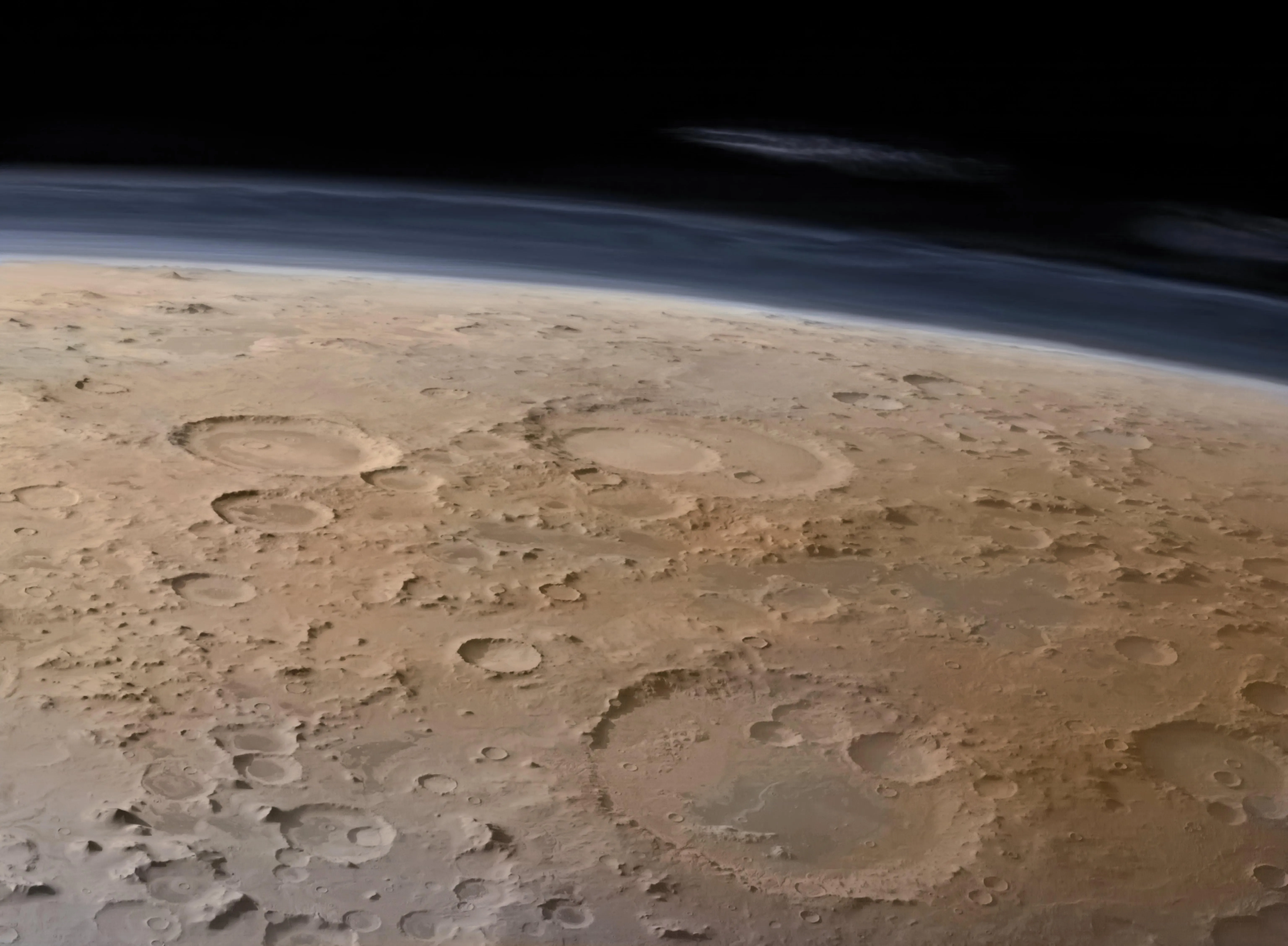Promethei Terra and Mars's Thin Atmosphere: A View from ESA's Mars Express

The Red Planet, Mars, continues to captivate us with its stark beauty and intriguing history. A striking image captured by the European Space Agency's (ESA) Mars Express spacecraft in 2016 offers a breathtaking perspective of Promethei Terra, a rugged highland region in the Martian southern hemisphere, alongside a vivid depiction of the planet's remarkably thin atmosphere. This incredible shot, a testament to advanced planetary imaging, provides valuable insights into Mars's geological makeup and its current atmospheric conditions.
Promethei Terra Revealed: A Glimpse into Mars's Ancient South
Promethei Terra is an expansive region characterized by ancient, heavily cratered terrain, indicative of a long history of impacts and geological processes. Located primarily in the southern high latitudes, it forms part of the heavily cratered highlands that dominate Mars's southern hemisphere. These ancient landscapes hold clues to Mars's early geological activity and provide a window into the planet's distant past, when conditions might have been vastly different. The intricate patterns of craters and valleys visible in such images help scientists piece together the planet's evolutionary story.
The Whispering Martian Atmosphere: A Faint Embrace
Perhaps one of the most striking features of this image is the ethereal blue band hugging the Martian limb – its incredibly thin atmosphere. While Earth boasts a robust atmosphere that sustains life and protects its surface, Mars's atmospheric pressure is less than 1% of Earth's. This tenuous veil, composed primarily of carbon dioxide, is barely substantial enough to support sustained liquid water on the surface today.
However, hints of activity are still present. Observant viewers might notice faint hazes or incredibly thin clouds, likely composed of water ice or carbon dioxide ice crystals, floating delicately above the Martian surface. These ephemeral formations serve as a stark reminder of the planet's atmospheric dynamics, however subdued they may be compared to Earth. The current thin atmosphere stands in stark contrast to scientific theories suggesting that early Mars once harbored a much thicker atmosphere, capable of supporting vast bodies of liquid water and potentially fostering the genesis of life. The dramatic loss of this atmosphere over billions of years is a key area of study for planetary scientists.
Mars Express: Our Enduring Eye on the Red Planet
Launched in 2003, ESA's Mars Express has been a stalwart observer of the Red Planet, providing a wealth of data about its surface, subsurface, atmosphere, and even its two small moons, Phobos and Deimos. The High Resolution Stereo Camera (HRSC) onboard has delivered stunning three-dimensional images, enabling detailed topographical mapping and contributing significantly to our understanding of Mars's geological evolution. Observations from missions like Mars Express are crucial in unraveling the mysteries of Martian climate change and the forces that transformed it from a potentially habitable world to the arid, cold planet we see today.
This image, a joint effort by ESA, DLR (German Aerospace Center), and Freie Universität Berlin, serves as a powerful reminder of the continuous exploration and discovery happening right at our cosmic doorstep. It highlights both the desolate beauty of Mars and the profound questions that continue to drive our quest to understand its past and future.




